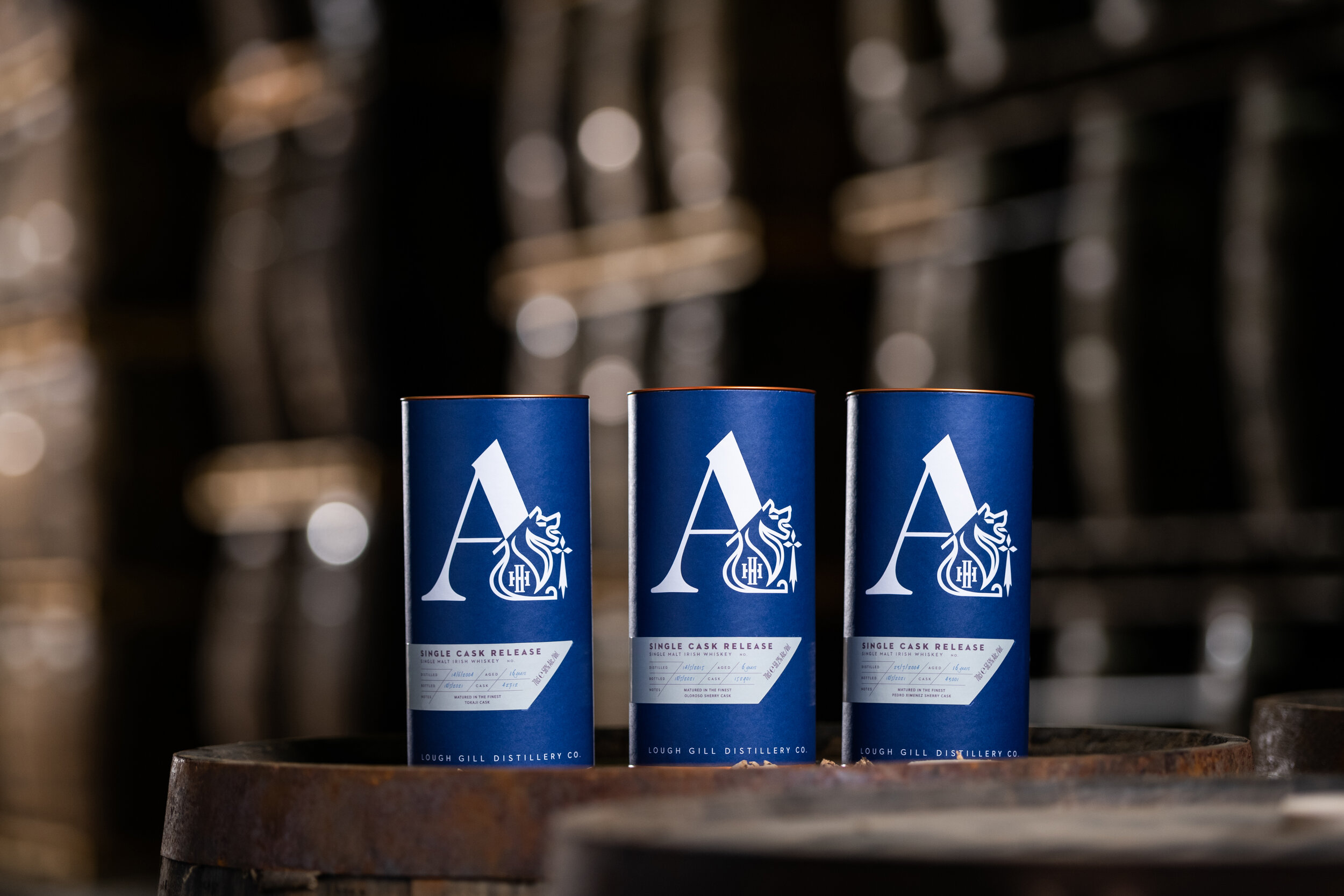The Colour Blue And Its Significance At Athrú
We know we talk about the Lough Gill Distillery’s positioning on Ireland’s Wild Atlantic Way, those beautiful blue seas, and our own unique water source - but the colour blue actually has even greater significance for us and our whiskey than just the surroundings and seas.
Don’t worry; we haven’t created a new blue-hued whiskey. But, we thought we’d delve a little into the historical origins of the colour blue, and look at why it’s become so notable here at the Lough Gill Distillery.
Before blue
It’s hard to imagine a time when the colour blue didn’t exist or wasn’t recognised, but until the Egyptians, this was exactly the case. If you think about it, there is very little blue in nature. Blue flowers only exist with human intervention and there are very few blue animals. Cave paintings from prehistoric times lack any blue and in ancient texts the sky is usually described as its own colour.
However, around 6,000 years ago, Lapis, a semiprecious stone mined in Afghanistan, became highly prized amongst Egyptians. When crushed, and combined with other ingredients, they were eventually able to generate a blue pigment, and the word “blue” emerged to describe it.
Slowly, the Egyptians spread their blue dyes throughout the world, passing them on to the Persians, Mesoamericans and Romans. But, like purple, the dyes were expensive and only royalty could afford them. Thus, blue remained rare for many centuries, though it slowly became popular enough to earn its own name in various languages. In those times, blue was more expensive than its weight in gold.
The colour of trust
The history of blue as an everyday colour began when the Catholic Church made an important move in 431AD, deciding to colour code the saints. Mary was given a blue robe, and, because Mary stood for innocence and trustworthiness, the colour blue was seen in a positive light. This same navy blue was adopted by militaries and police to convey a sense of trust.
The colour ‘Persian Blue' became known widespread as the blue colour of Persian pottery and the colour of tiles used in mosques and palaces in the Middle East. Its use gradually migrated Westwards, with the first recorded use of Persian Blue as a colour in English language occurring in 1669.
Pigments vs synthetics
One of the reasons the colour blue was so rare and expensive, was due to the way it was made; by grinding and crushing stones to create a powder. Until synthetics were created to replicate these colours, the only way to use them was to get hold of the powder.
Ultramarine is a deep blue colour pigment that was originally made by grinding lapis lazuli into a powder. The name comes from the Latin ultramarinus, literally "beyond the sea", because the pigment was imported into Europe from mines in Afghanistan by Italian traders during the 14th and 15th centuries. It was the finest and most expensive blue used by Renaissance painters, but remained an extremely expensive pigment until a synthetic ultramarine was invented in 1826.
Another blue that was popular, but less expensive was smalt. Made from ground blue potassium glass containing cobalt, it was used from the 15th to the 18th centuries. In Europe the use of smalt as an artist's pigment was widespread as early as the late sixteenth century. Smalt was popular because of its low cost and its manufacture became a specialty of the Dutch and Flemish in the 17th century.
Who knows how long stones and glass would have been ground for, were it not for a paint maker’s accident in 1706, which led to the first modern synthetic pigment. Prussian Blue (also known as Berlin Blue or Parisian Blue), can be credited to the paint maker Diesbach in Berlin when he accidentally used potash tainted with blood while creating red dye. The blood, potash and iron sulphate reacted and created a blue, rather than the planned red, pigment.
In the navy
Over the years, various methods were used to manufacture the deep blue that we know today as navy blue. And, because it was expensive, when building expensive houses (like Hazelwood House in 1722), the architect often specified navy blue as part of the décor. It became synonymous with the formal rooms to which ladies would traditionally retire after dinner; the drawing room.
A blue discovery at Hazelwood House
By now you’re probably wondering what the relationship between grinding stones to make blue pigment, and the Lough Gill distillery is. Well, when we started to renovate the rear formal rooms of Hazelwood House, we used conservation specialists to remove centuries of dust, grime and paint from the various walls, ceilings, cornicing and mouldings.
In the drawing room to the rear of the house, we discovered that the ceiling roses and mouldings were originally painted a bluish-purple colour. This would have been from circa 1730. Intrigued, we decided to try to find out what colour it was. Using UV light and natural light the conservationists were able to identify that the colour was originally a deep blue, but had faded to light bluish-purple over the centuries.
So the question became; was it Persian blue made from ground lapis lazuli, Prussian blue accidentally made using blood, synthetic ultramarine from 1826 or even smalt, containing ground glass?
By examining its properties under different light conditions, looking at the dates of likely painting and ultimately doing a full chemical analysis, we identified the colour as Smalt.
Thus, this has become our corporate colour and is painted on the top of every Lough Gill Distillery investor cask….
If you’d like to experience the blue for yourself, here you can discover more about our investor casks.




